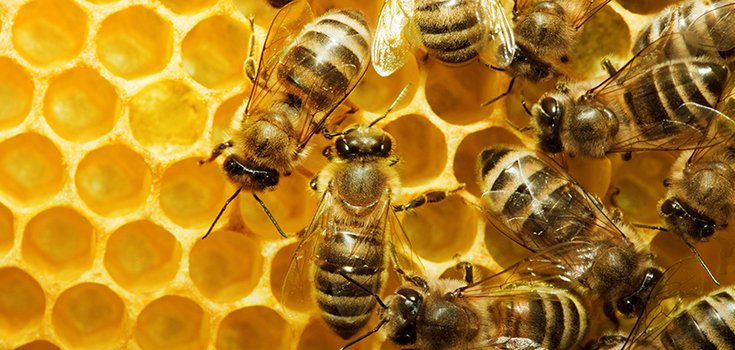57 Pesticides Named as Cause for Bee Deaths in Europe

More than 1000 pesticides are used in the US, and who knows how many of these have contributed to colony collapse disorder, the strange and sudden death of one of our most important pollinating species – bees. In a new study released by researchers in Poland, 57 specific pesticides have been named for poisoning bees.
The study published in the Journal of Chromatography by researchers from Poland’s National Veterinary Institute utilized a new test that allowed them to analyze exactly which of the 200 pesticides licensed for use in the EU were contributing to honeybee deaths.
Lead author Tomasz Kiljanek said:
“Bee health is a matter of public concern. Bees are considered critically important for the environment and agriculture by pollinating more than 80 percent of crops and wild plants in Europe. We wanted to develop a test for a large number of pesticides currently approved for use in the European Union to see what is poisoning the bees.”
The researchers narrowed it down to 57 pesticides with an undeniable link to bee demise. Using a method called QuEChERS, more commonly used to find pesticide residues in food, the research tool can simultaneously test for 200 pesticides as well as the compounds that are formed when pesticides break down.
This allows researchers to determine which pesticides are to blame, whether they are in their original form, and whether they have broken down in the environment or in the bees’ bodily systems.
A quarter of the pesticides the EU is using play a role in the recent critical decline of honeybee populations.
Read: Harvard Finds Pesticide in 70% of Honey Samples Tested
Earthjustice.org explains a scenario that happened in the US:
“On a fine June morning two years ago, at a Target store outside Portland, Oregon, customers arrived to a startling sight: the parking lot was covered with a seething mat of bumblebees, some staggering around, most already dead, more raining down from above. The die-off lasted several days.
It didn’t take long to figure out that the day before a pest-control company had sprayed a powerful insecticide on surrounding Linden trees to protect them from aphids; but nobody warned the bees to stay away. In the end, an estimated 50,000 bumblebees perished.
The tragedy at Target wiped out as many as 300 bumblebee colonies of bees no longer available to pollinate nearby trees and flowers.”
This is not an isolated incidence, and though scientists in the US were baffled by honeybee decline in the beginning of this strange and morbid phenomenon, there are multiple studies now proving that pesticides are an alarmingly big part of the problem.
Sources:
